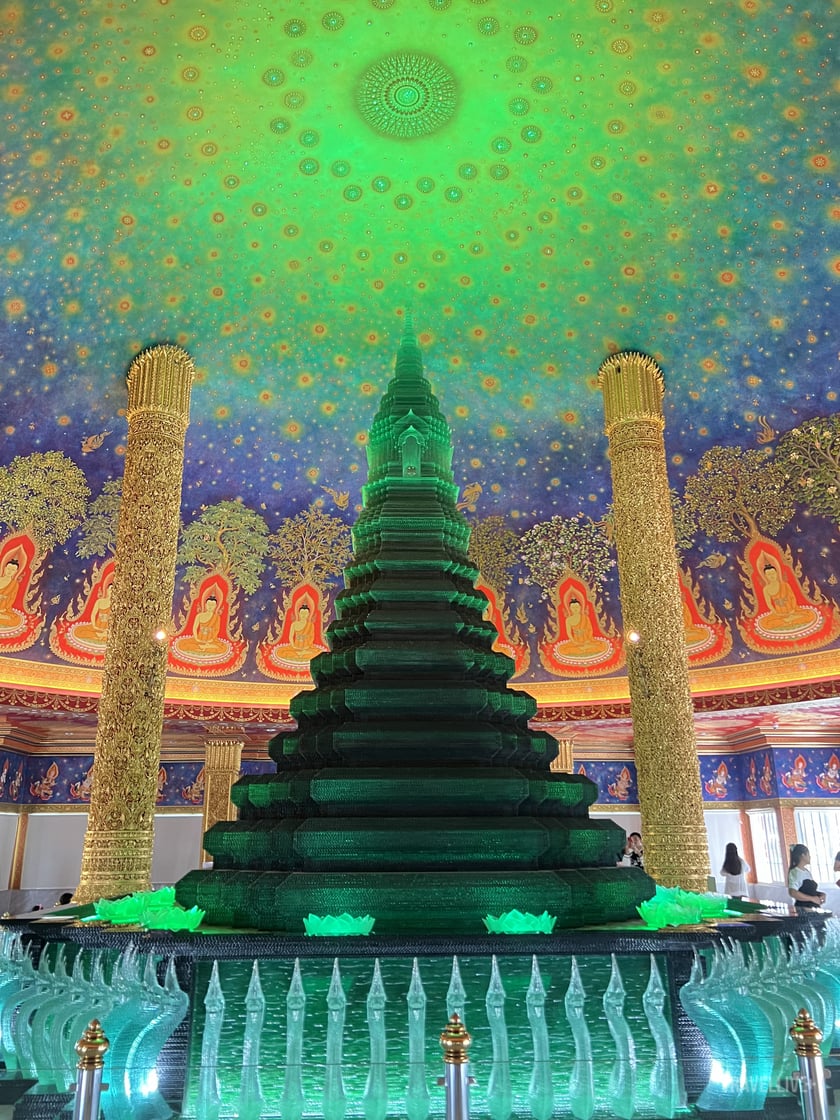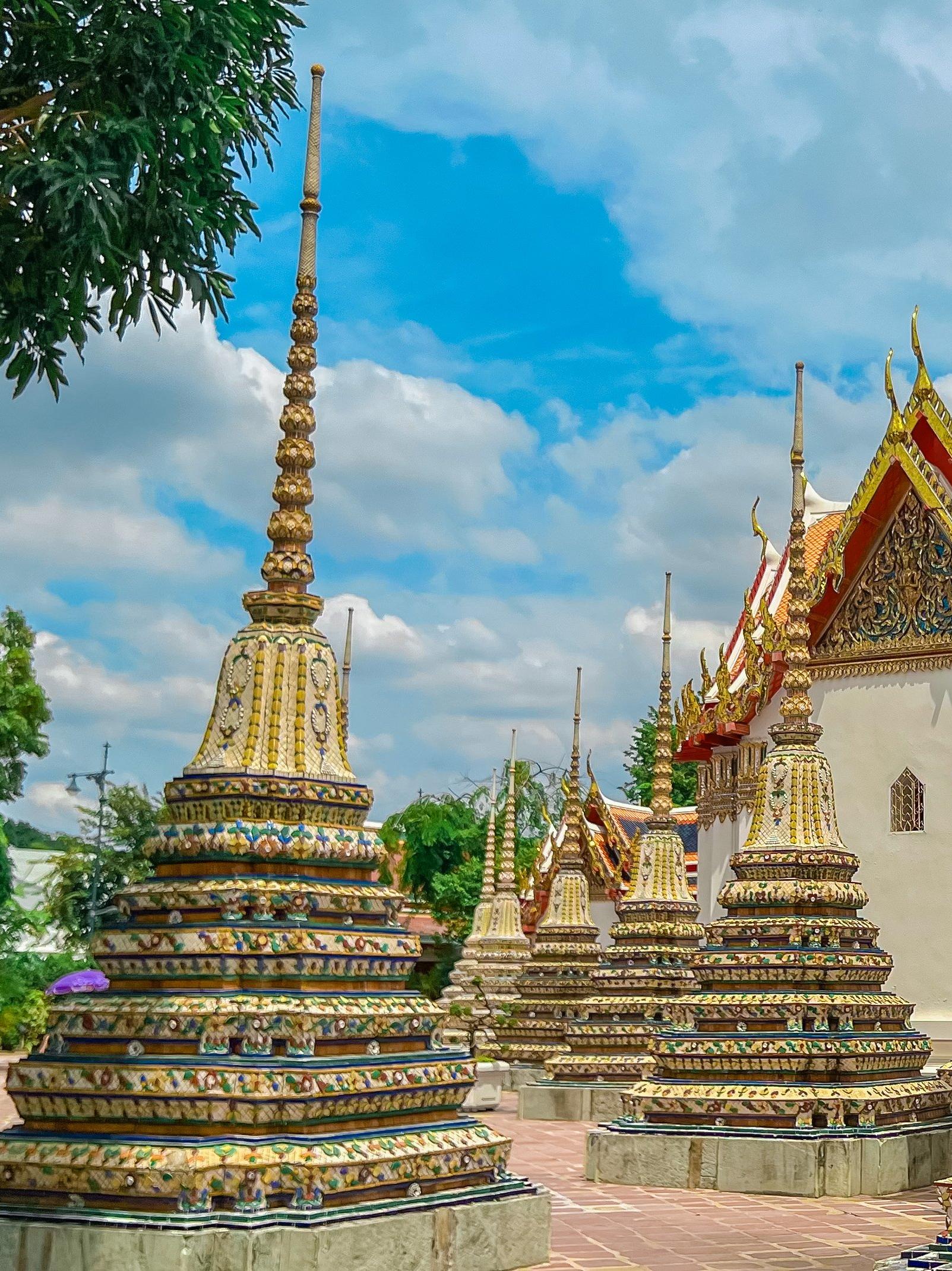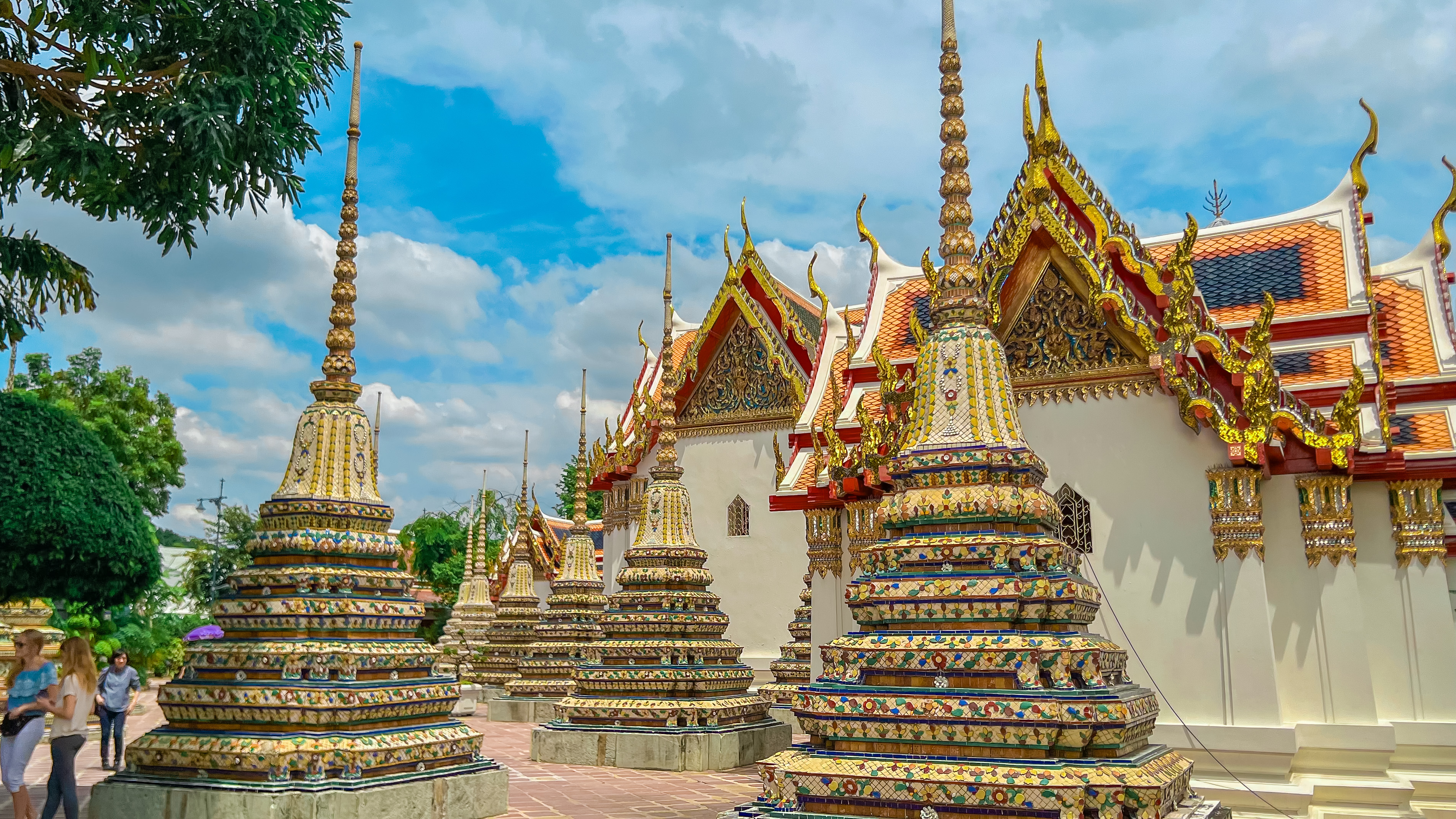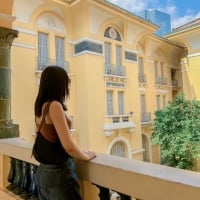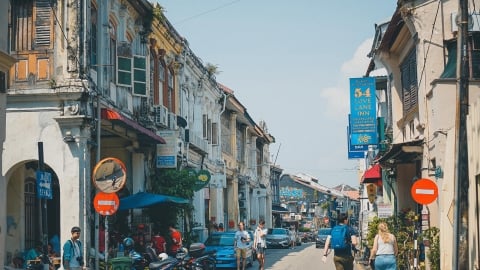Wat Pho - The temple with the largest reclining Buddha statue in Thailand
Located in Phra Nakhon district (Bangkok), Wat Pho is the oldest and largest Theravada Buddhist temple in Thailand. The official name of the temple is Wat Phra Chetuphon Vimolmangklararm Rajwaramahaviharn. The short name Wat Pho in Thai comes from Wat Phodharam - the name of a monastery lost during the Ayutthaya period. King Rama I of the Chakri era rebuilt the temple over a period of nearly 8 years. King Rama III continued the construction for 16 years, expanding the grounds and King Rama IV gave the temple its present name.
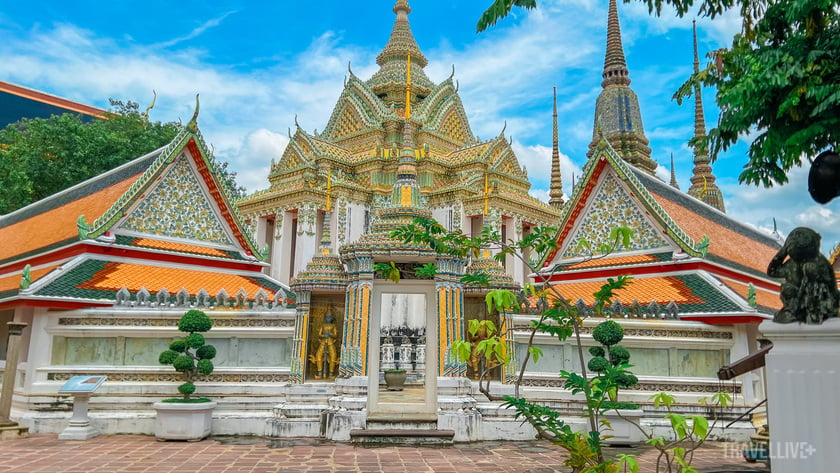
Wat Pho is the oldest and largest Theravada Buddhist temple in Thailand.
Built on the banks of the Chao Phraya River during the Ayutthaya period in the 16th century, Wat Pho has undergone many renovations to achieve its present grandeur. The temple grounds are divided into two parts: the north is home to a shrine with many Buddha statues and a traditional massage school, and the south is home to monks and a monastery.
Wat Pho is famous for the largest reclining Buddha statue in Thailand, measuring 64 meters in length and 15 meters in height. The Shakyamuni Buddha statue is built of bricks covered in plaster, the outside of the statue is gilded and decorated with many sophisticated patterns. When coming to the temple, people often put coins in 108 bronze bowls next to the Buddha statue with the belief that they will receive good luck. At Wat Pho, there is not only a giant reclining Buddha statue, but also more than 1,000 statues in many different postures.

Wat Pho is famous for its reclining Buddha image, the largest in Thailand, measuring 64 meters long and 15 meters high.
Wat Pho campus is an ideal check-in place that you should not miss. The ancient Ayutthaya architecture of the temple is preserved almost intact. Wat Pho has 91 circular towers, including 71 small towers and 20 large towers. Each tower is meticulously decorated with traditional Thai motifs combined with the colors of Buddhist architecture. In addition, visitors will also encounter some Chinese motifs on the tiles at the temple.
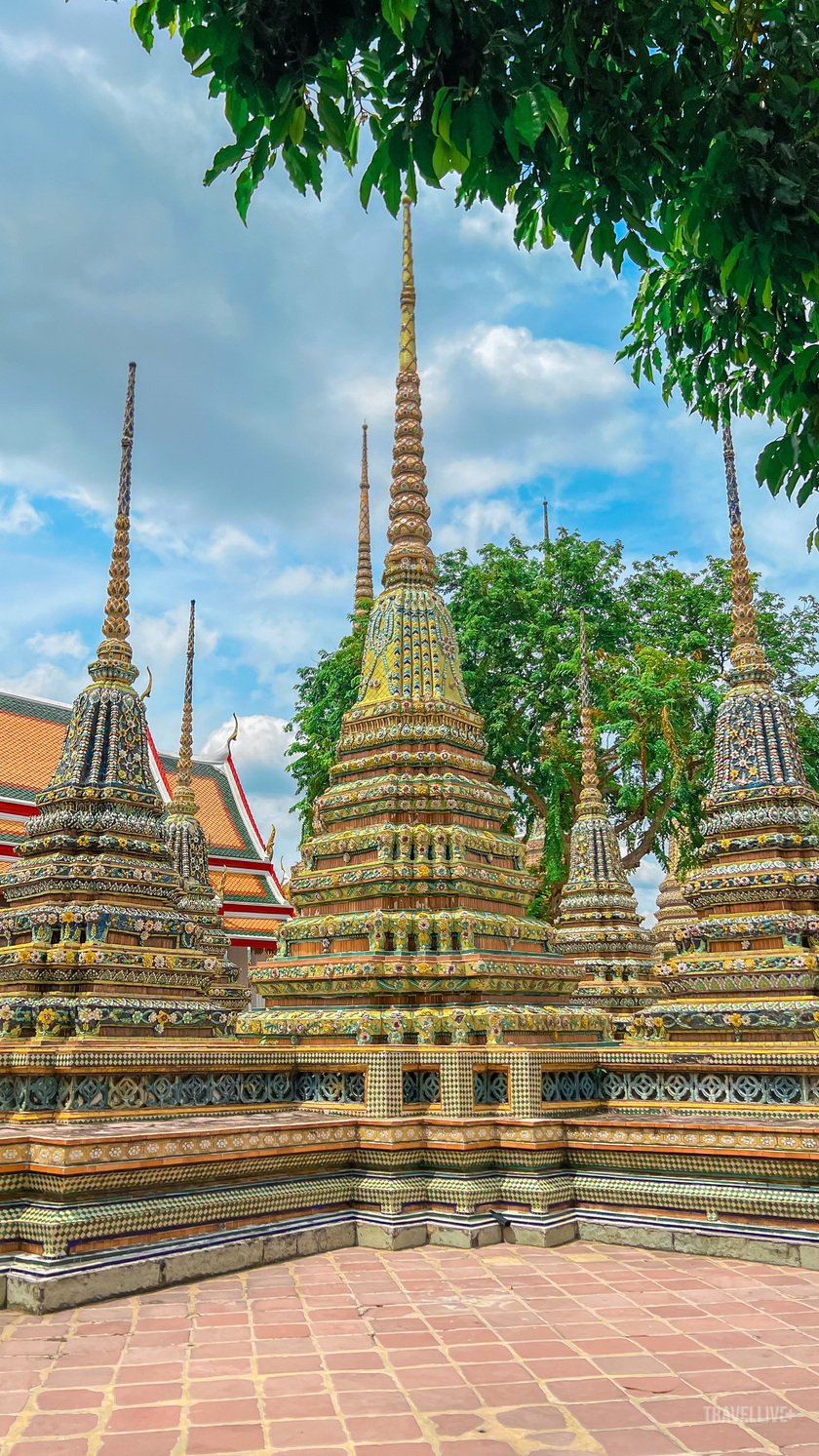
Wat Pho has 91 circular towers, including 71 small towers and 20 large towers.

In addition, visitors will also encounter some Chinese motifs on the tiles at the temple.
Wat Arun - The jewel of Thailand
Nestled peacefully on the west bank of the Chao Phraya River, Wat Arun is a temple with a magnificent beauty that makes it difficult for anyone to take their eyes off it. Wat Arun is considered a clear and authentic representation of the quintessence of three cultures: Thai, Khmer and Chinese, with a special focus on ancient Khmer architecture during the Ayutthaya period.
During the Ayutthaya Dynasty in the early 17th century, King Taksin, who ruled Thonburi at that time, ordered the construction of a temple on this land. Initially, Wat Arun was called Wat Makok, after the village where the temple was built. During the reign of King Rama II, Wat Arun underwent a major renovation and was renamed Wat Chaeng after the king. At that time, Wat Arun was not only a sacred temple but also an important trading point, witnessing many boats bustling up and down the Chao Phraya River to buy and sell goods.
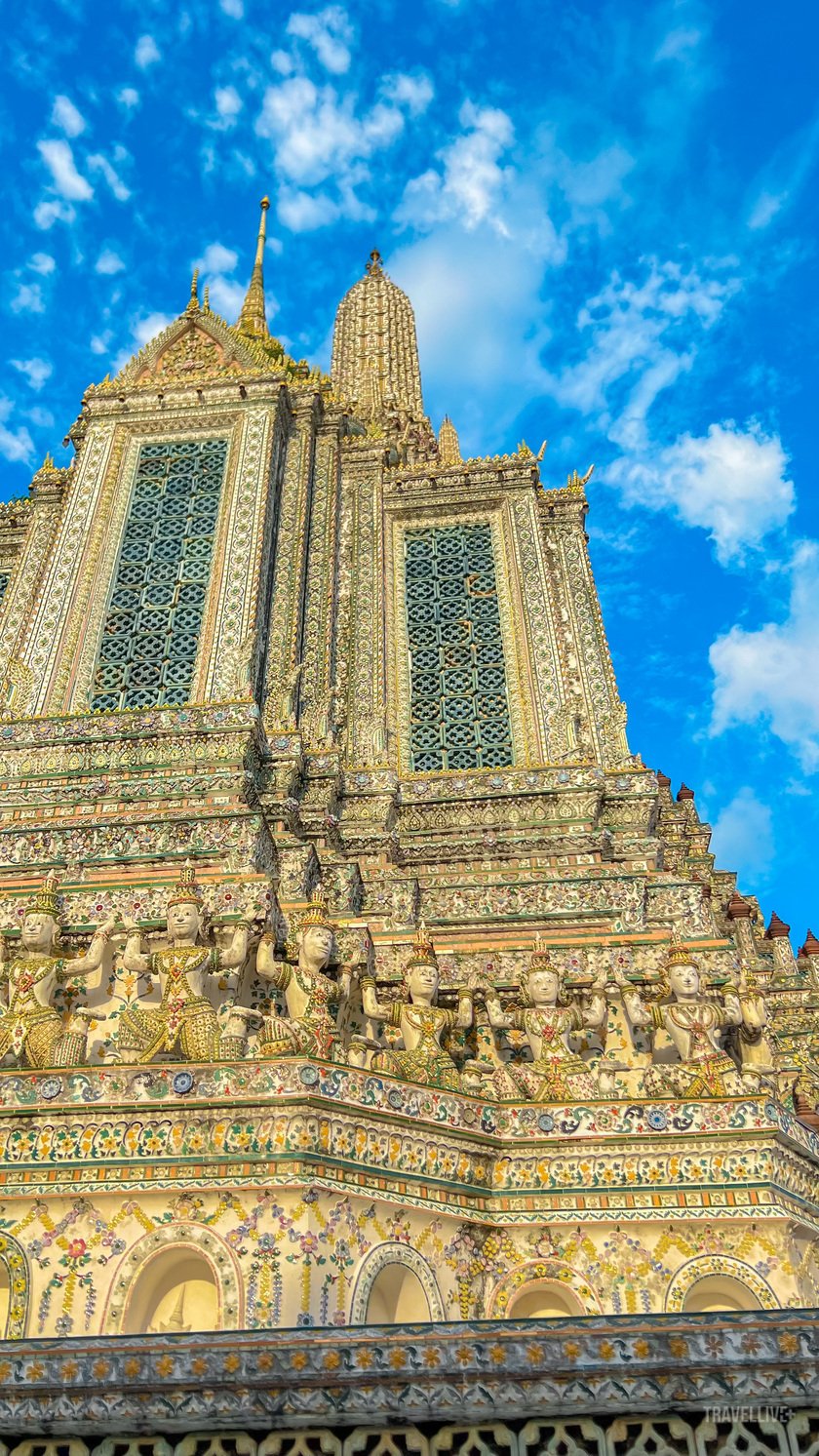
Wat Arun is a temple with such magnificent beauty that many people cannot bear to take their eyes off it.
In the early 19th century, King Rama III built a new central tower at Wat Arun. This tower represents the image of the temple to this day. Unlike other structures, the central tower was built in the original Khmer architecture, decorated with colorful porcelain, ceramics, and glass imported from China. Through many ups and downs, Wat Arun was restored and renovated many times, with the highlight of a large-scale restoration in the 20th century. In 1980, Wat Arun was honored to be recognized by UNESCO as a World Cultural Heritage.
As soon as you set foot here, you will surely be amazed by the image of towering spires with towering peaks standing firmly against the deep blue sky. Not stopping there, Wat Arun also possesses multi-colored walls and a series of exquisite carvings from porcelain, ceramic, and glass.

As soon as you set foot here, you will surely be amazed by the image of towers with towering, sharp peaks standing firmly against the deep blue sky.
The most prominent feature of the Wat Arun complex is the central tower, called “Phra Prang”, 82 meters high, decorated entirely with porcelain and colorful glass. The temple grounds are divided into two main courtyards with many statues of guardian gods, soldiers, and a statue of the god Indra riding the white elephant Erawan, also known as the god of thunder, a supreme god according to Hindu beliefs.
Although it is called the Temple of Dawn, Wat Arun is most beautiful at sunset. It can be said that Wat Arun is a testament to the uniqueness of Thailand's cultural and artistic heritage. It is the harmonious blend of many cultures and skillful decorative art that has turned this place into a perfect stopover in the eyes of everyone in Thailand.
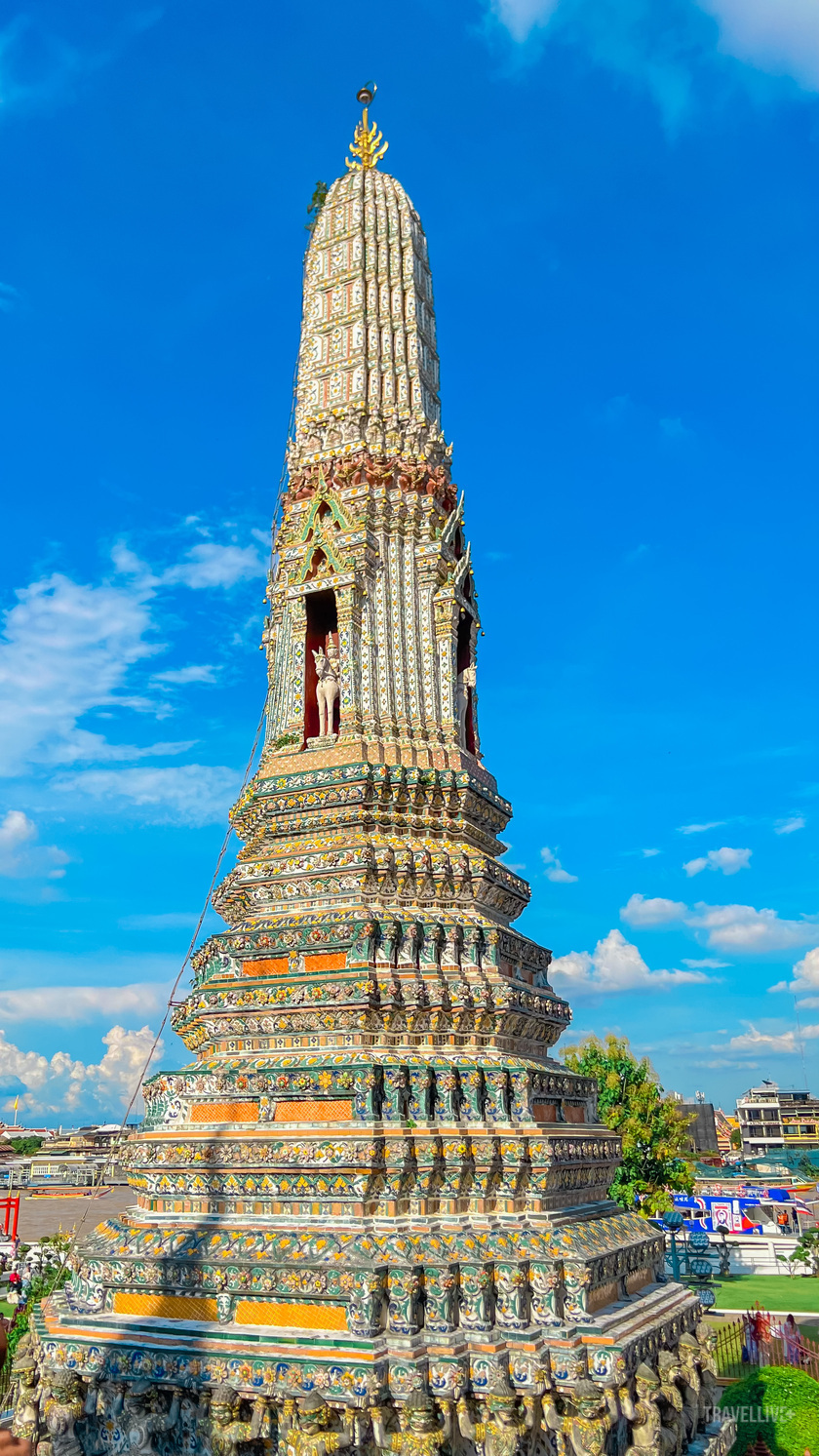
Although it is called the Temple of Dawn, Wat Arun is most beautiful at sunset.
Wat Paknam Bhasicharoen - The temple with the largest Buddha image in Bangkok
Wat Paknam Bhasicharoen is a royal temple located on the banks of the Chao Phraya River in the Phasi Charoen district of Bangkok. Paknam means “locked in a canal”, referring to the location of the temple. If you are tired of driving and walking while traveling, the waterway is a quite interesting alternative to get to the temple.
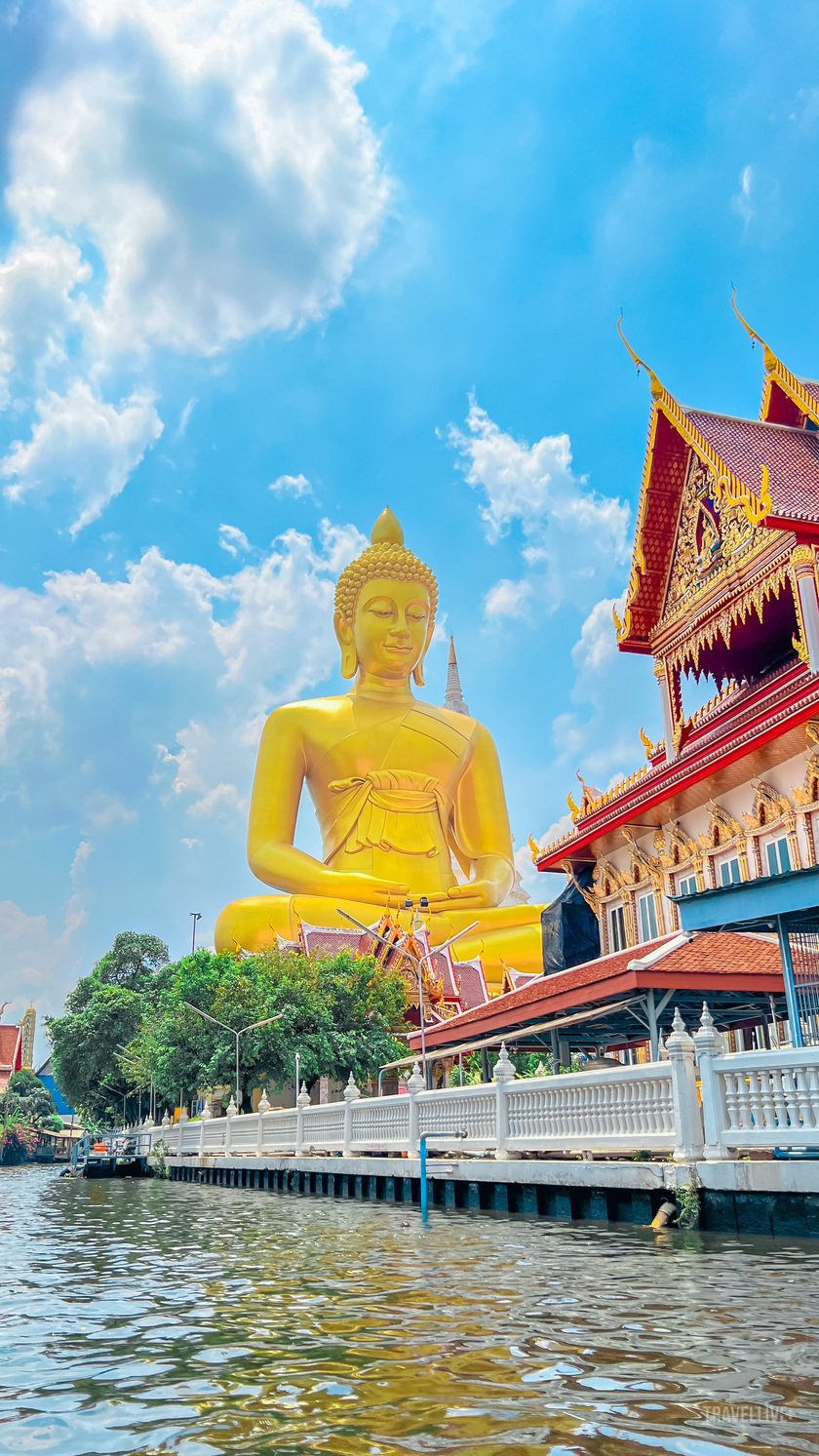
Wat Paknam Bhasicharoen is a royal temple located on the banks of the Chao Phraya River in the Phasi Charoen district of Bangkok.
Wat Paknam was built in 1610, when King Srisanphet VIII commissioned a temple to honor Buddhism. However, it was later destroyed during the war between Thailand and Burma in 1767. In the 19th century, Wat Paknam was rebuilt with more modern architecture by a Buddhist monk who took an interest in restoring the temple. Since then, the temple has been considered the center of the Santi Asoke sect, with many religious and social activities taking place here.
The main architecture of Wat Paknam is heavily influenced by traditional Thai architecture, especially Theravada Buddhist architecture. The main building of the temple is tall and majestic, with many pillars and massive patterns. The building has four floors, the top floor is dedicated to the statue of Guanyin. The interior design of the temple is extremely delicate and solemn with the architecture characterized by the use of many colors as well as patterns and oil paintings that decorate different areas. Decorative items such as yellow lamps and Buddha statues are also placed throughout the temple.
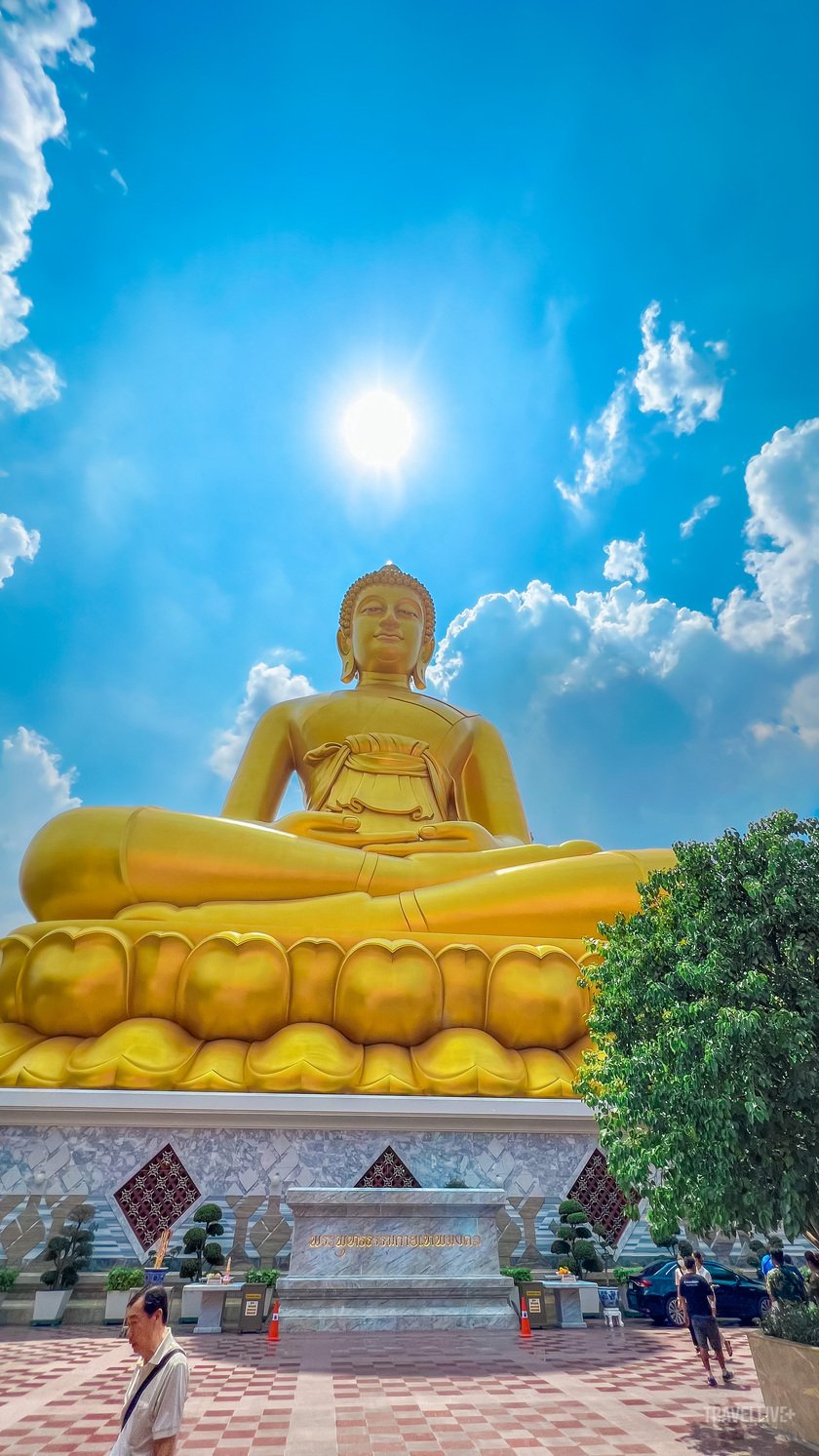
The giant golden Buddha statue and the massive white tower stand out in the middle of Bangkok.
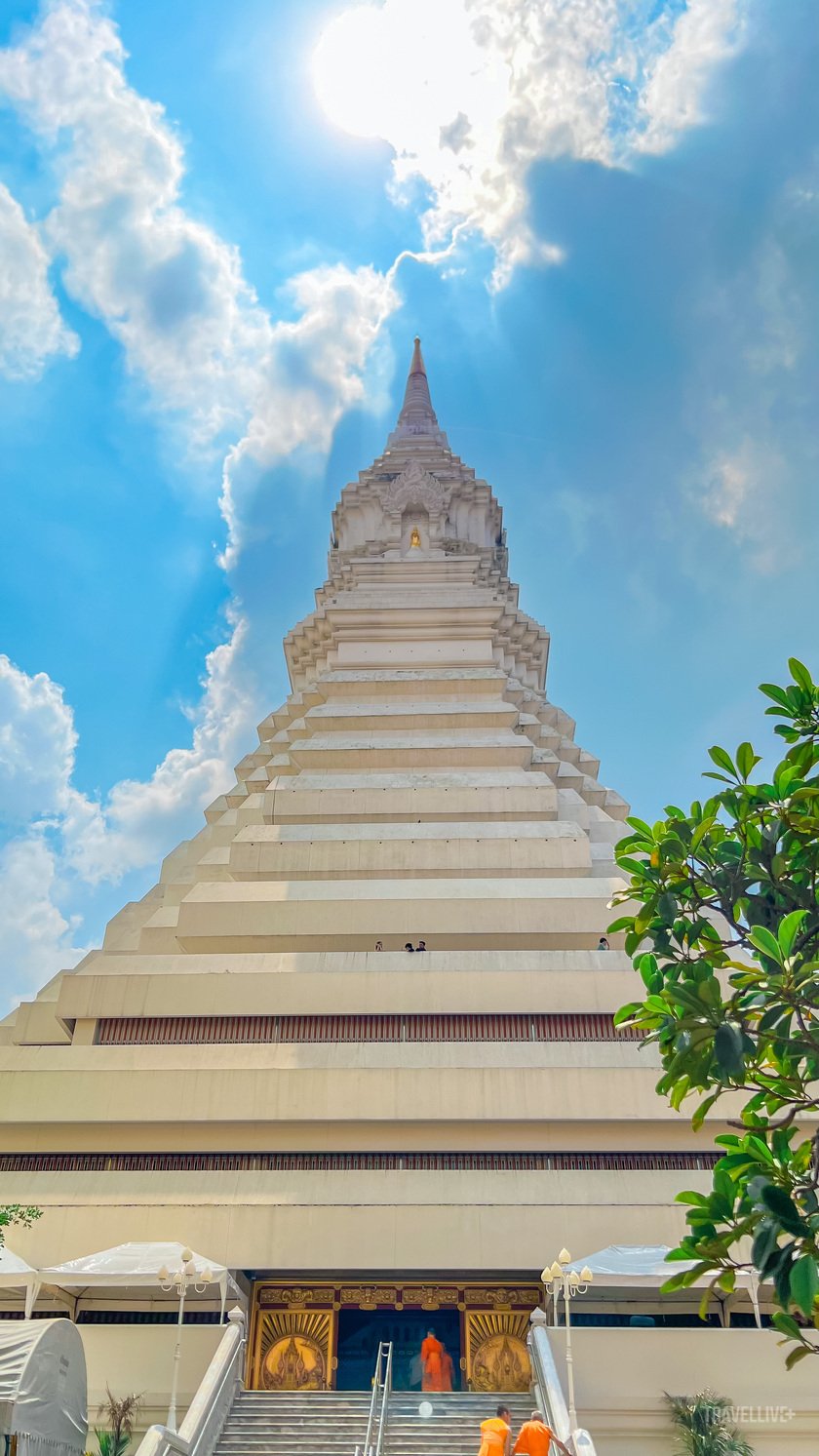
The main building of the temple is tall and majestic, with many pillars and massive patterns.
In addition, Wat Paknam also has many other buildings and structures such as the library building and the hall building, the university building, the dining building, and large flower gardens. All of these structures are beautifully and delicately decorated, showing the interest of all social classes in maintaining and developing the temple.
One of the outstanding features in the architecture and design of Wat Paknam is the combination of tradition and modernity. The traditional architecture is preserved and updated to suit the modern needs of the community. This combination makes the temple one of the most important cultural and religious sites in the “Land of Golden Pagodas”.
